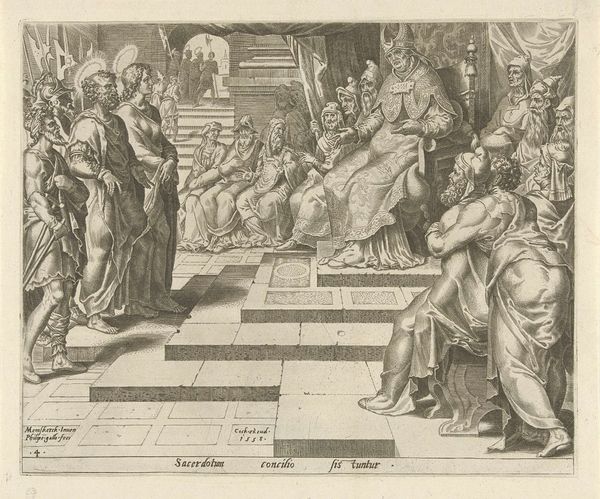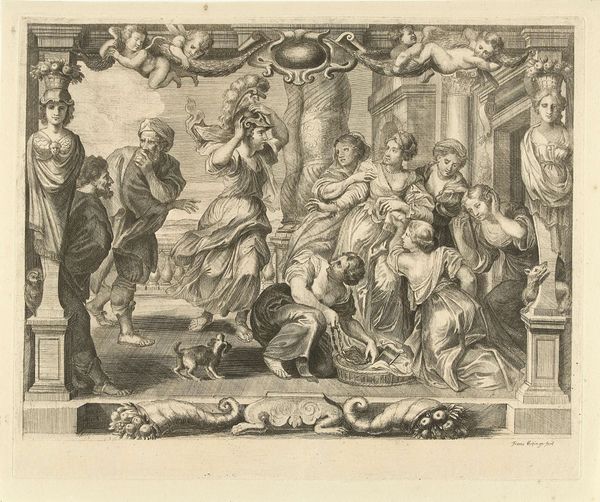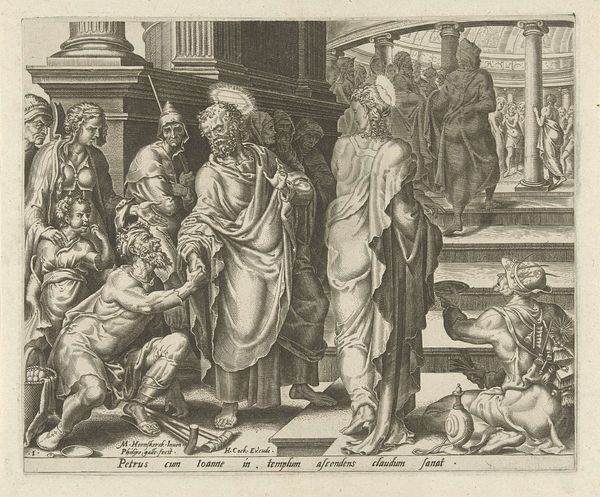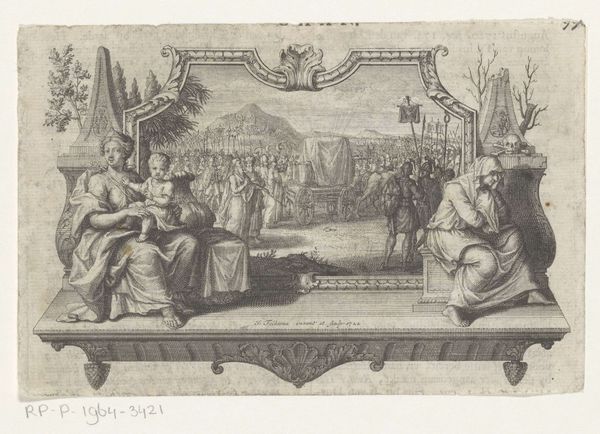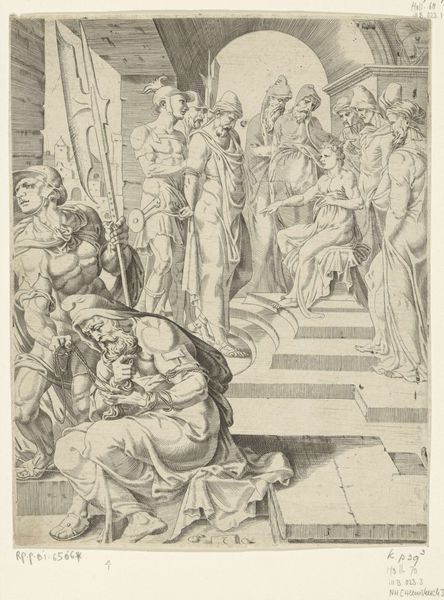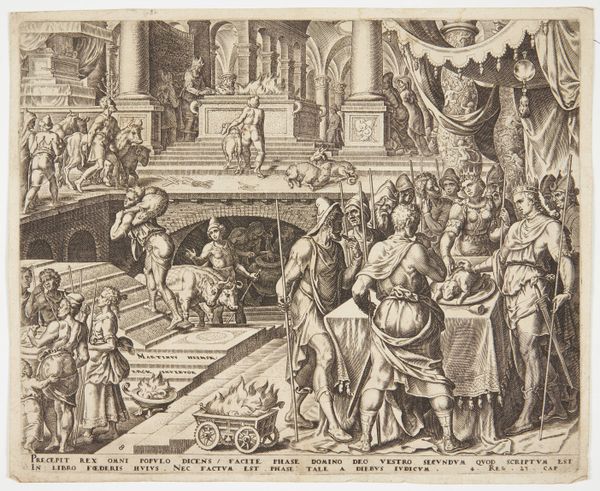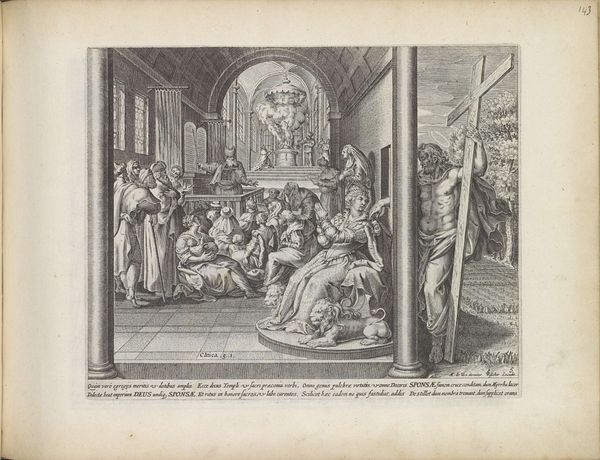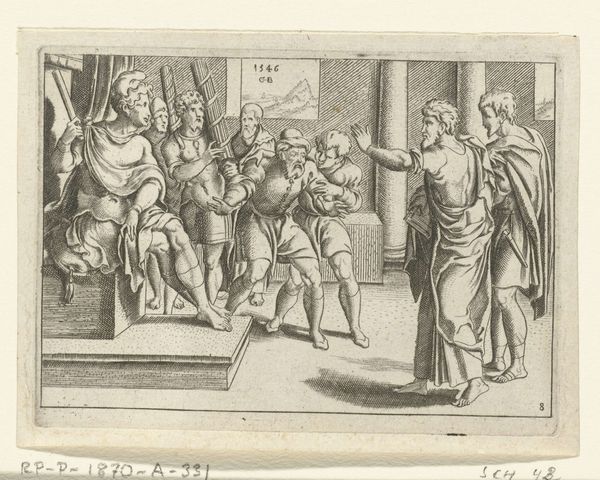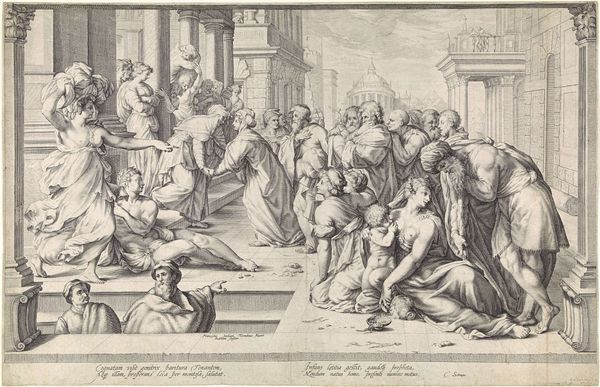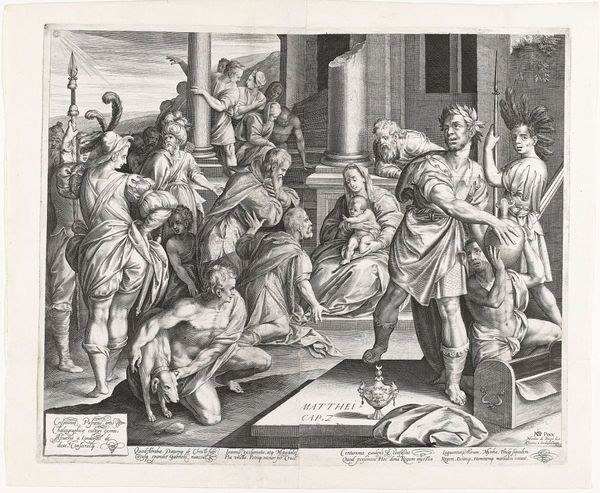
print, engraving
#
narrative-art
# print
#
old engraving style
#
classical-realism
#
mannerism
#
figuration
#
history-painting
#
engraving
Dimensions: height 205 mm, width 250 mm
Copyright: Rijks Museum: Open Domain
Curator: Looking at Philips Galle’s 1558 engraving, “Petrus en Johannes worden vrijgelaten”, or “Peter and John Released," I’m struck by the composition. The detail is just incredible! What are your initial thoughts? Editor: My first impression is the sheer contrast between the figures. There’s a pronounced divide between the radiant halos above Peter and John and the cold, calculating gaze of the officials. The emotional weight feels heavy. Curator: Indeed. It is crucial to acknowledge that prints like this had a crucial function in the 16th century, serving as propaganda and reinforcing specific theological and political narratives for a broad audience. Galle disseminated religious stories through reproducible imagery. We see here, for instance, a moment taken from the Acts of the Apostles, Chapter 4, a critical depiction of early Christian persecution. Editor: The hierarchical arrangement of figures is pretty telling too. The seated figure is imposing, isn't he? Notice his elevated position in relation to Peter and John, whose apparent innocence is underscored by their lack of ornamentation. Curator: Absolutely, that’s typical of the Mannerist style, this deliberate manipulation of perspective to convey authority. However, considering the historical backdrop, we also cannot ignore the impact of the Counter-Reformation and the era's tumultuous religious conflicts. The image becomes not just a narrative, but a symbol of defiance and resilience in the face of oppression. I want to stress how art reflects, influences and interacts with systems of power and societal structure. Editor: The medium also impacts that meaning—engravings allowed these scenes to be widely circulated, spreading this particular representation far and wide. The artist is not just creating a singular object but is producing multiples to be consumed as political tools. Curator: I agree. Understanding print culture helps contextualize how such visual narratives actively contributed to constructing cultural understandings of power and faith, further illuminating the significance and lasting effect of such artwork within societal ideologies. Editor: Looking closer has given me so much to consider about the ways we visually encode narratives and then spread them around. Thank you. Curator: It certainly emphasizes the complexities embedded within art beyond surface aesthetics.
Comments
No comments
Be the first to comment and join the conversation on the ultimate creative platform.
